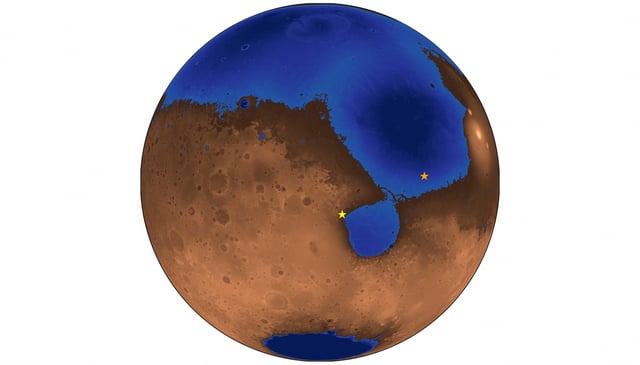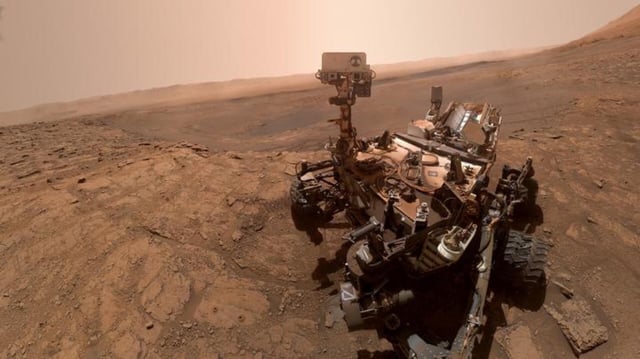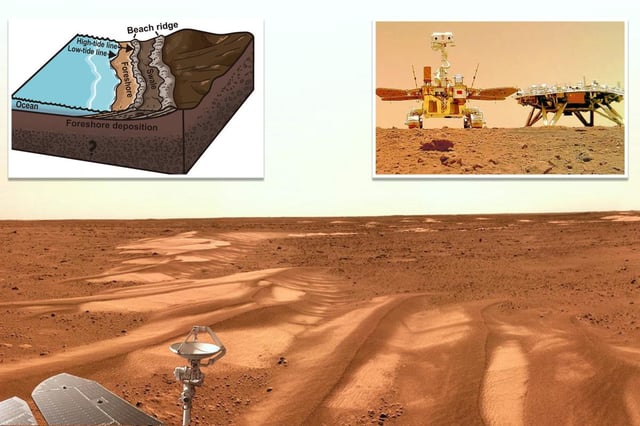Overview
- The Zhurong rover, operated by the China National Space Administration, identified sedimentary deposits resembling beach formations in Utopia Planitia on Mars.
- Data collected using ground-penetrating radar revealed reflective rock layers dipping away from a paleoshoreline, consistent with coastal sedimentation on Earth.
- The findings point to the presence of a stable ocean during Mars' Late Hesperian period, extending the timeline for surface water on the planet.
- This discovery suggests that Mars retained potentially habitable environments longer than previously believed, raising new questions about its capacity to support life.
- The study, conducted by a team of Chinese and American scientists, was published in the Proceedings of the National Academy of Sciences (PNAS).



